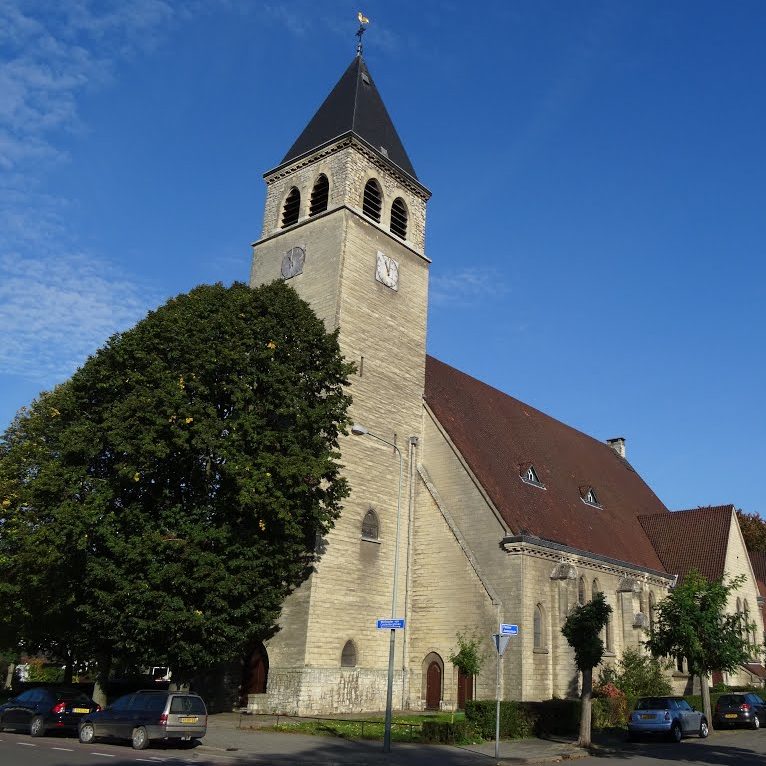Het Kerkgebouw

De kerk werd in de jaren 1936-38 gebouwd naar plannen van de architecten A. Swinkels uit Maastricht en E. Schoenmaekers uit Sittard. Aannemer Scheurs uit Elsloo voerde het werk uit voor 73.386 gulden (exclusief grondaankoop en inventaris). Bouwpastoor was de zeer creatieve Jos Janssen, die eerder kapelaan van de Sint-Martinuskerk in Wyck was geweest. Op 12 maart 1936 werd de nieuwe, van Heer afgescheiden parochie van Scharn opgericht, die aanvankelijk gebruik maakte van een noodkerk.
Op 20 september 1936 vond de eerstesteenlegging plaats door deken Schoenmaeckers van Wyck. In juli 1937 was de kerk gereed voor ingebruikname (de toren was pas een jaar later klaar) en op 6 september vond de kerkwijding plaats door mgr. Lemmens, bisschop van Roermond. Pastoor Janssen zag in dat door de Grote Depressie van de jaren 1930 er weinig geld zou zijn voor de aankleding van de nieuwe kerk. Toch wist hij op creatieve manieren meubilair en kunstschatten voor zijn kerk bijeen te brengen.
Bijzonder is de wijze waarop Janssen aan marmer voor de aankleding van de kerk van Scharn wist te komen. Nog voor de aanbesteding van de kerk had Janssen een brief geschreven aan paus Pius XI, waarin hij hem verzocht om een relikwie van de patroonheilige Antonius van Padua en een partij marmer voor de kerk. Het eerste kreeg hij wel, het laatste niet, waarna Janssen zich wendde tot de Italiaanse dictator Benito Mussolini. Hij hoopte dat Mussolini zou bezwijken voor het argument dat de kerk aan een Italiaanse heilige was gewijd. Mussolini zegde inderdaad eind 1937 een lading kostbaar marmer ter waarde van 40.000 gulden toe, 14000 kilo groen cipollino apuana marmer, dat Janssen zelf in Carrara mocht uitzoeken en dat in de zomer van 1939 per schip vanuit Livorno via Amsterdam in Maastricht arriveerde. Als dank wapperde daarna enige tijd een Italiaanse vlag op de kerk. Janssen kleedde de kerk aan als een Italiaanse volkskerk met een veelheid van schilderijen, beelden, kroonluchters en altaren. Boven het koor hing zelfs een enorme rozenkrans met lampjes. Onder zijn opvolger pastoor Systermans werd het meeste vanaf 1958 weer verwijderd.[2][3] In 1966 werden een aantal objecten in de kerk ingeschreven in het rijksmonumentenregister.
Genomen van de wikipedia-pagina
